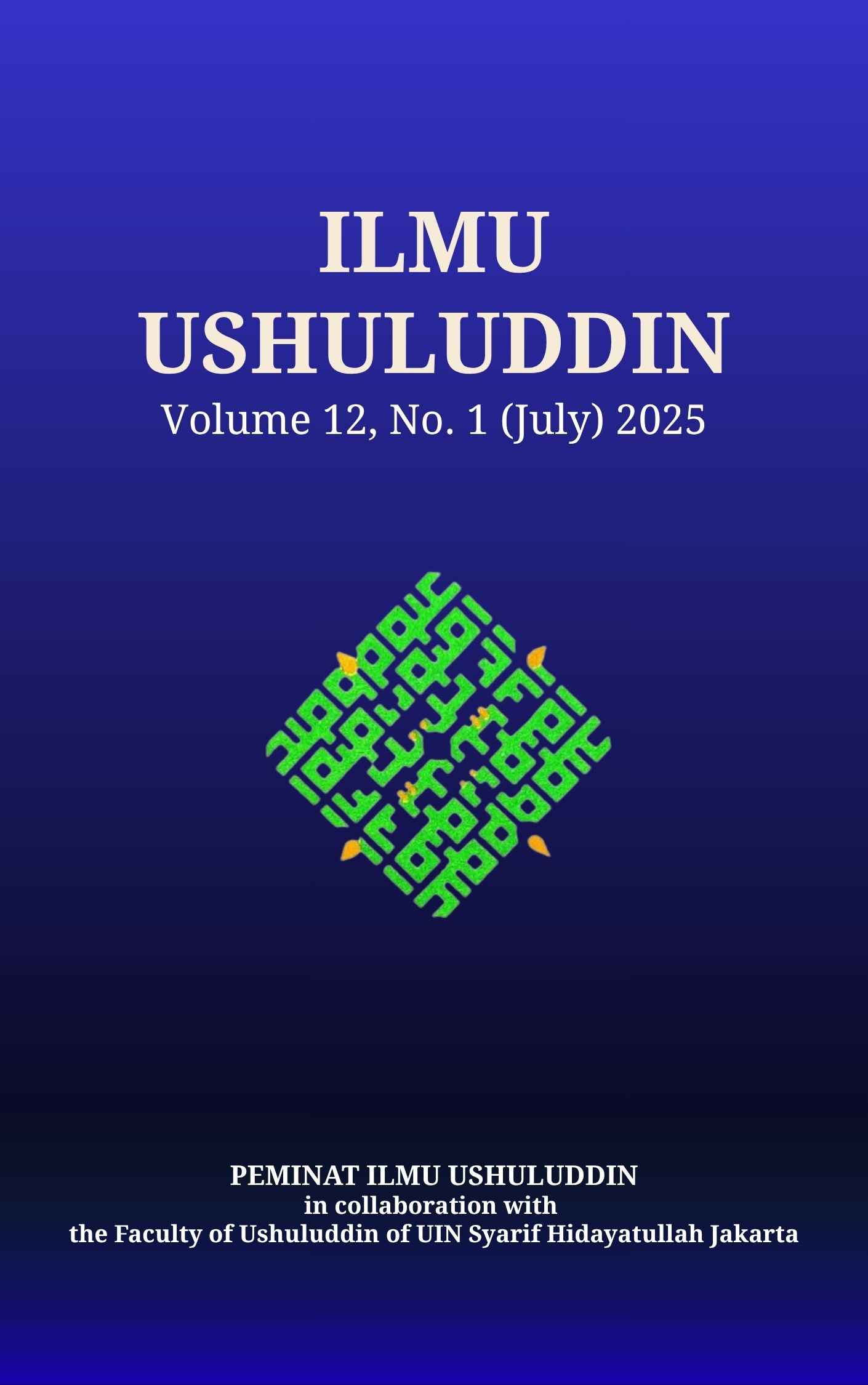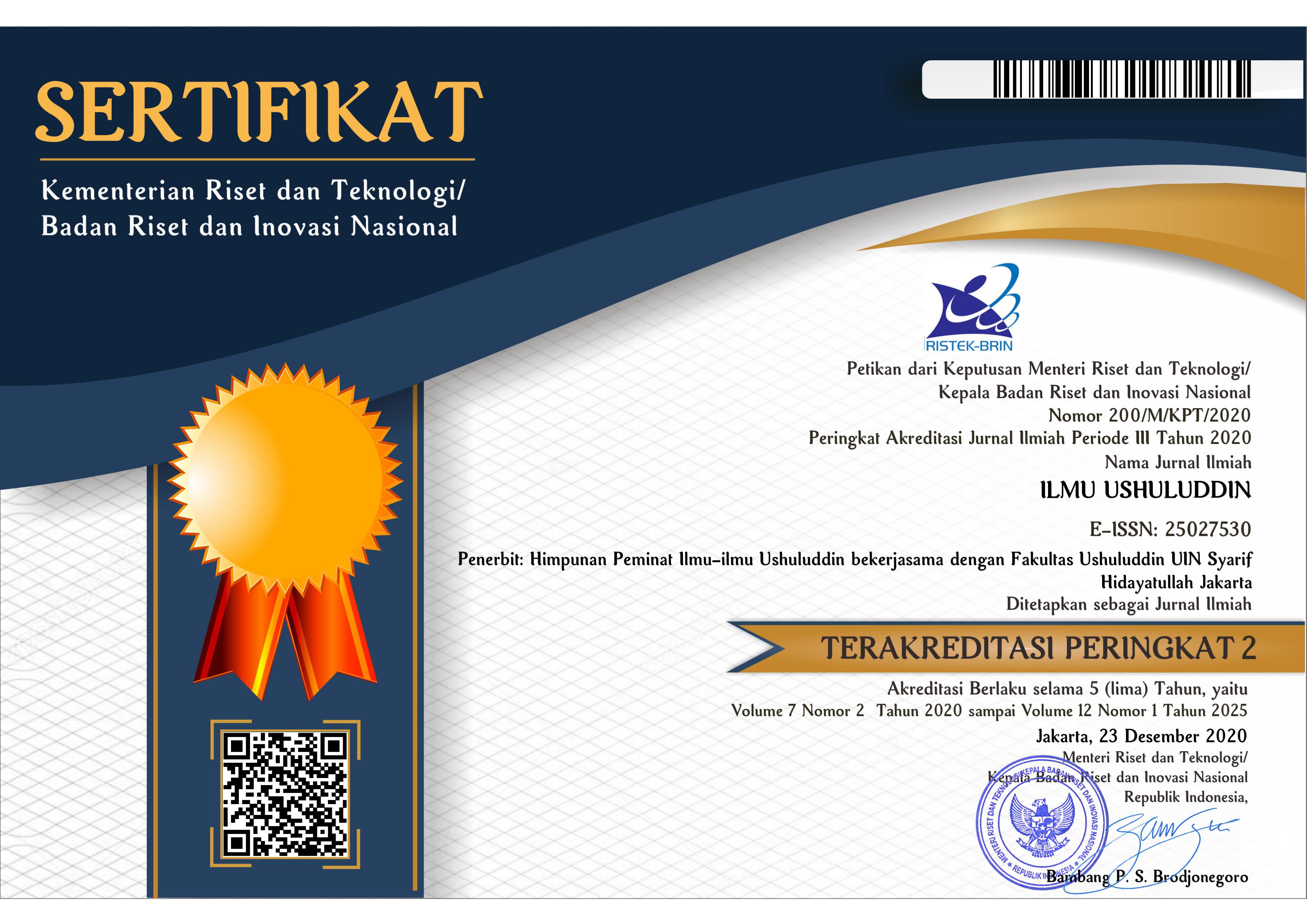RESURGENCY OF SUFI ISLAM IN INDONESIA: FROM THE PERIPHERY TO THE CENTER
DOI:
https://doi.org/10.15408/iu.v12i1.46798Abstract
This article is about the re-emergence of Sufi Islam in Indonesia, which is a huge turnaround from the periphery towards the core of spiritual and social life. Based on a literature review, the article discovers that Sufism has been revitalized in the following four areas: (1) doctrinal renovation through the Neo-Sufism paradigm, (2) reformatting of tarekat's social spaces in education, economic empowerment, and healthcare services, (3) infiltration of Sufi values into cyber culture through social media and online da'wah, and (4) Sufism as a type of social and cultural capital that determines public morals and social cohesion. Based on the above discoveries, the article confirms that Sufism has survived and has become a spiritual and social force that is responsive to the current challenges as well as strengthening the strengthen the weak version of Islam and the values of Islam Nusantara in the urban society in Indonesia.
References
Abdurahman, Dudung. “Islam, Sufism, and Character Education in Indonesia History.” TAWARIKH: International Journal for Historical Studies 9, no. 2 (2018): 159–76.
Ahmadi, Rizqa. “The Politics Of A Local Sufism In Contemporary Indonesia.” Epistemé: Jurnal Pengembangan Ilmu Keislaman 16, no. 01 (May 31, 2021): 59–82.
Azra, Azyumardi. Islam Nusantara: Islam Indonesia Dalam Kontroversi. Jakarta: Kompas, 2019.
Faisal, Dedi. “Integrasi Tarekat Dalam Aktivitas Sosial-Keagamaan Kontemporer.” Jurnal Ilmu Dakwah 15, no. 3 (2020): 305–308.
Hakim, Budi Rahman. “Actualization of Neo‑Sufism: A Case Study of the Tariqa Qadiriyya Naqshabandiyya Pondok Pesantren Suryalaya.” Tilburg University, 2020.
———. “Neo-Sufism as a Social Da’wah Paradigm: Addressing Challenges and Transforming Spirituality in Modern Indonesia.” International Journal of Educational Technology and Society 1, no. 3 (2024): 14–33.
———. “Neosufisme Sebagai Etika Pembangunan: Studi Atas Transformasi Spiritual Tarekat Qadiriyah Naqsyabandiyah Suryalaya Di Era Orde Baru.” Jurnal Riset Rumpun Agama Dan Filsafat 2, no. 2 (2023): 267–78.
———. “Tasawuf, Nasionalisme, Dan Gerakan Sosial: Studi Spiritualitas Transformasional Abah Sepuh Dalam Konteks Kolonialisme Dan Kemerdekaan.” Inovasi : Jurnal Sosial Humaniora Dan Pendidikan 2, no. 2 (2023): 213–26.
Hakim, Budi Rahman, and Fajrur Rahman. “Genealogi Tarekat Neosufi Di Indonesia: Dari Ritual Eksklusif Ke Aksi Sosial Kolektif.” Jurnal Riset Rumpun Ilmu Sosial 3, no. 1 (2024): 247–259.
Howell, Julia. “Modernity and Islamic Spirituality in Indonesia’s New Sufi Networks.” In Expressing Islam: Religious Life and Politics in Indonesia, edited by Greg Fealy and Sally White, 217–40. Singapore: ISEAS, 2008.
Knauth, D C. “Hearing Sufism in Modernist Islam: The Musical Ulama of Indonesia,” 2006. https://www.semanticscholar.org/paper/%22Hearing-Sufism-In-Modernist-Islam%3A-the-Musical-of-Knauth/.
Makhasin, Luthfi. “Urban Sufism, Media and Religious Change in Indonesia.” Ijtimā`iyya: Journal of Muslim Society Research 1, no. 1 (September 30, 2016): 23–36.
Musthofa, Budiman Mahmud. “Transformasi Usaha Kecil Menengah Berbasis Kreativitas Seni Tradisi: Studi Kasus Saung Angklung Udjo Di Bandung.” Sosiohumanika 10, no. 1 (2017): 57–70.
Mustofa, M. “Tinjauan Budaya Atas Kultur Tasawuf Berbasis Mursyid Perempuan.” El Harakah 10, no. 3 (2008): 259–71.
Nugroho, Wahyu. “Urban Sufism Dan Pergeseran Praktik Dzikir Publik: Studi Kasus Majelis Rasulullah.” Teosofia: Indonesian Journal of Islamic Mysticism 12, no. 1 (2021): 49–52.
Nurani, Shinta. “Urban Sufism and Transformation of Islamic Culture in Millennial Society.” RELIGIA 21, no. 2 (2018): 163–82.
Quddus, Abdul, and Lalu Muhammad Ariadi. “Gerakan Tarekat Dan Pertumbuhan Budaya Berfilosofi Di Lombok.” Teosofi 5, no. 2 (2016): 321–45.
Syakur, A. “Model Ekonomi Sufi: Studi Atas Budaya Ekonomi Tarekat Shiddiqiyyah.” ISTITHMAR: Jurnal Pengembangan Ekonomi Islam 2, no. 1 (2019): 35–50.
Taufik, Zulfan, and Muhammad Taufik. “Mediated Tarekat Qadiriyah Wa Naqshabandiyah in the Digital Era: An Ethnographic Overview.” ESENSIA: Jurnal Ilmu-Ilmu Ushuluddin 22, no. 1 (May 29, 2021): 35–43.
Utama, Wildan Sena. “Incorporating Spirituality and Market: Islamic Sharia Business and Religious Life in Post-New Order Indonesia.” Masyarakat: Jurnal Sosiologi 20, no. 2 (2016): 113–37.
Wahyuni, Yuyun. “Refining Traditional and Modern: A Literary Study of Indonesian Sufism and Neo-Sufism from Pesantren.” DINIKA: Academic Journal of Islamic Studies 2, no. 1 (2017): 69–88.
Zainurofieq, Z. “Koperasi Berbasis Komunitas Keagamaan Di Kabupaten Tasikmalaya.” Jurnal Iman Dan Spiritualitas 3, no. 1 (2022): 17–29.
Zamhari, Arif. “Socio-Structural Innovations in Indonesia’s Urban Sufism: The Case Study of the Majelis Dzikir and Shalawat Nurul Mustafa.” Journal of Indonesian Islam 7, no. 1 (2013): 119–44.
Downloads
Published
Issue
Section
License
Copyright (c) 2025 Budi Rahman Hakim

This work is licensed under a Creative Commons Attribution-ShareAlike 4.0 International License.




